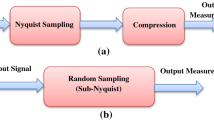Abstract
The polynomial dimensional decomposition (PDD) is a powerful tool for uncertainty quantification. When dealing with complex or high-dimensional problems, the computational cost of the PDD is key to its application. This study proposes a novel sparse PDD method integrated with the Bayesian LASSO (least absolute shrinkage and selection operator) method and an adaptive polynomial basis updating method. Firstly, we construct the sparse PDD metamodel using an analytical Bayesian LASSO method, which is developed based on the framework of sparse Bayesian learning. The analytical method employs an iteration formula to calculate the maximum posterior estimation instead of the time-consuming Markov chain Monte Carlo (MCMC) sampling, and therefore can be used for refining the PDD model repeatedly. Secondly, to improve the performance of the analytical Bayesian LASSO, this paper proposes a cross-entropy-based method for updating the sparse PDD model, which allows the sequential augmentation of the polynomial bases and adaptively determines the polynomial degree and the maximum order of the component functions. The cross-entropy-based method can guarantee a small number of polynomial bases when refining the sparse model. Accordingly, the computational accuracy can be improved with the same sample size. We verify the proposed method using three numerical benchmark examples, and apply it to solve one complex practical engineering problem. The results show that the proposed sparse PDD method is a good choice for uncertainty quantification.















Similar content being viewed by others
Replication of results
As comprehensive implementation details are provided, we are confident that the methodology in this paper is reproducible. Therefore, no additional data and code are appended. If one is interested in the methodology and needs more help for the reproduction, please feel free to contact the corresponding author by email.
Abbreviations
- ANOVA:
-
Analysis of variance
- c :
-
The PDD coefficients
- c :
-
The vector of PDD coefficients of the standard response
- c 0 :
-
The vector of PDD coefficients of the original response
- CDF:
-
Cumulative distribution function
- D :
-
Cross-entropy
- g :
-
Function responses
- g, g s :
-
Vectors of original and standard function responses
- g t :
-
The failure threshold
- \(g_{\text{s}}^{*}\) :
-
The prediction of standard function response of a sample
- H :
-
Design matrix
- HDMR:
-
High-dimensional model representation
- j u :
-
Multi-index set
- LASSO:
-
Least absolute shrinkage and selection operator
- MAP:
-
Maximum a posterior estimation
- MCMC:
-
Markov chain Monte Carlo
- MCS:
-
Monte Carlo simulation
- N :
-
The dimensionality of input variables
- p, q :
-
Discrete probability distribution
- P :
-
The degree of a multivariable orthogonal polynomial
- PCE:
-
Polynomial chaos expansion
- PDD:
-
Polynomial dimensional decomposition
- PDF:
-
Probability density function
- P f :
-
Failure probability
- P t :
-
The truncation degree of the PDD
- r, r o :
-
Results of the MCS and other methods
- S :
-
The maximum dimensionality of component functions of HDMR
- SPCE:
-
Sparse polynomial chaos expansion
- u, v :
-
Index vector
- U :
-
The set of the active polynomial bases
- UQ:
-
Uncertainty quantification
- w(x):
-
The joint PDF of the input variables
- x = [x 1, x 2, …, x N]:
-
N-Dimensional input variables
- ε, ε :
-
Prediction errors
- θ, θ :
-
Standard variables corresponding to x
- λ :
-
Hyperparameter of the hierarchical Bayesian model
- μ :
-
Mean value of the prediction distribution
- μ 0 :
-
Mean value of the function responses
- ρ :
-
Hyperparameter of the hierarchical Bayesian model
- σ 2 :
-
Variance of the likelihood function
- σ 0 :
-
Standard deviation of the likelihood function
- \(\sigma_{{\text{g}}}^{2}\) :
-
The global accuracy parameter
- Σ :
-
The covariance matrix
- τ :
-
Hyperparameter of the hierarchical Bayesian model
- Φ, ϕ :
-
The orthogonal polynomial bases
- ω :
-
The vector composed by the Hyperparameters in the analytical Bayesian LASSO
References
Bouhlel MA, Bartoli N, Otsmane A, Morlier J (2016) Improving kriging surrogates of high-dimensional design models by Partial Least Squares dimension reduction. Struct Multidisc Optim 53(5):935–952
Chatterjee T, Chowdhury R (2017) An efficient sparse Bayesian learning framework for stochastic response analysis. Struct Saf 68:1–14
Cheng K, Lu Z (2020a) Active learning polynomial chaos expansion for reliability analysis by maximizing expected indicator function prediction error. Int J Numer Methods Eng 121(14):3159–3177
Cheng K, Lu Z (2020b) Structural reliability analysis based on ensemble learning of surrogate models. Struct Saf 83:101905
Cheng K, Lu Z, Zhang K (2019) Multivariate output global sensitivity analysis using multi-output support vector regression. Struct Multidisc Optim 59(6):2177–2187
Crestaux T, Le Maıtre O, Martinez JM (2009) Polynomial chaos expansion for sensitivity analysis. Reliab Eng Syst Saf 94(7):1161–1172
Diaz P, Doostan A, Hampton J (2018) Sparse polynomial chaos expansions via compressed sensing and D-optimal design. Comput Methods Appl Mech Eng 336:640–666
Erfani SM, Rajasegarar S, Karunasekera S, Leckie C (2016) High-dimensional and large-scale anomaly detection using a linear one-class SVM with deep learning. Pattern Recogn 58:121–134
Hans C (2009) Bayesian lasso regression. Biometrika 96(4):835–845
He W, Zeng Y, Li G (2019) A novel structural reliability analysis method via improved maximum entropy method based on nonlinear mapping and sparse grid numerical integration. Mech Syst Signal Process 133:106247
He W, Zeng Y, Li G (2020) An adaptive polynomial chaos expansion for high-dimensional reliability analysis. Struct Multidisc Optim 62(4):2051–2067
Hoeffding, W. (1992). A class of statistics with asymptotically normal distribution. In: Breakthroughs in statistics. Springer, New York, pp 308–334
Huang Y, Beck JL, Li H (2017) Hierarchical sparse Bayesian learning for structural damage detection: theory, computation and application. Struct Saf 64:37–53
Huang Y, Shao C, Wu B, Beck JL, Li H (2019) State-of-the-art review on Bayesian inference in structural system identification and damage assessment. Adv Struct Eng 22(6):1329–1351
Jahanbin R, Rahman S (2020) Stochastic isogeometric analysis in linear elasticity. Comput Methods Appl Mech Eng 364:112928
Ji S, Xue Y, Carin L (2008) Bayesian compressive sensing. IEEE Trans Signal Process 56(6):2346–2356
Jung Y, Cho H, Lee I (2019) MPP-based approximated DRM (ADRM) using simplified bivariate approximation with linear regression. Struct Multidisc Optim 59(5):1761–1773
Karagiannis G, Lin G (2014) Selection of polynomial chaos bases via Bayesian model uncertainty methods with applications to sparse approximation of PDEs with stochastic inputs. J Comput Phys 259:114–134
Karagiannis G, Konomi BA, Lin G (2015) A Bayesian mixed shrinkage prior procedure for spatial–stochastic basis selection and evaluation of gPC expansions: applications to elliptic SPDEs. J Comput Phys 284:528–546
Li M, Wang Z (2020) Deep learning for high-dimensional reliability analysis. Mech Syst Signal Process 139:106399
Li G, Wang SW, Rabitz H (2002) Practical approaches to construct RS-HDMR component functions. J Phys Chem A 106(37):8721–8733
Li G, Nie Z, Zeng Y, Pan J, Guan Z (2020) New simplified dynamic modeling method of bolted flange joints of launch vehicle. J Vib Acoust. https://doi.org/10.1115/1.4045919
Lykou A, Ntzoufras I (2013) On Bayesian lasso variable selection and the specification of the shrinkage parameter. Stat Comput 23(3):361–390
Marelli S, Sudret B (2015) UQLab user manual–Polynomial chaos expansions. Chair of Risk, Safety & Uncertainty Quantification, ETH Zürich, 0.9-104 edition, 97-110
Meng Z, Zhang Z, Zhang D, Yang D (2019) An active learning method combining Kriging and accelerated chaotic single loop approach (AK-ACSLA) for reliability-based design optimization. Comput Methods Appl Mech Eng 357:112570
Morris MD (1991) Factorial sampling plans for preliminary computational experiments. Technometrics 33(2):161–174
Nyeo SL, Ansari RR (2011) Sparse Bayesian learning for the Laplace transform inversion in dynamic light scattering. J Comput Appl Math 235(8):2861–2872
Park T, Casella G (2008) The bayesian lasso. J Am Stat Assoc 103(482):681–686
Rabitz H, Aliş ÖF (1999) General foundations of high-dimensional model representations. J Math Chem 25(2):197–233
Rahman S (2008) A polynomial dimensional decomposition for stochastic computing. Int J Numer Meth Eng 76(13):2091–2116
Rahman S (2014) Approximation errors in truncated dimensional decompositions. Math Comput 83(290):2799–2819
Rahman S (2018) Mathematical properties of polynomial dimensional decomposition. SIAM/ASA J Uncertain Quantif 6(2):816–844
Rahman S (2019) Uncertainty quantification under dependent random variables by a generalized polynomial dimensional decomposition. Comput Methods Appl Mech Eng 344:910–937
Rahman S (2020) A spline chaos expansion. SIAM/ASA J Uncertain Quantif 8(1):27–57
Rahman S, Xu H (2004) A univariate dimension-reduction method for multi-dimensional integration in stochastic mechanics. Probab Eng Mech 19(4):393–408
Rubinstein RY, Kroese DP (2013) The cross-entropy method: a unified approach to combinatorial optimization, Monte-Carlo simulation and machine learning. Springer, New York
Shao Q, Younes A, Fahs M, Mara TA (2017) Bayesian sparse polynomial chaos expansion for global sensitivity analysis. Comput Methods Appl Mech Eng 318:474–496
Shore J, Johnson R (1981) Properties of cross-entropy minimization. IEEE Trans Inf Theory 27(4):472–482
Sobol’ IM (2003) Theorems and examples on high dimensional model representation. Reliab Eng Syst Saf 79(2):187–193
Sofi A, Muscolino G, Giunta F (2020) Propagation of uncertain structural properties described by imprecise Probability Density Functions via response surface method. Probab Eng Mech 60:103020
Tang K, Congedo PM, Abgrall R (2016) Adaptive surrogate modeling by ANOVA and sparse polynomial dimensional decomposition for global sensitivity analysis in fluid simulation. J Comput Phys 314:557–589
Tang K, Wang JM, Freund JB (2019) Adaptive sparse polynomial dimensional decomposition for derivative-based sensitivity. J Comput Phys 391:303–321
Thapa M, Mulani SB, Walters RW (2020) Adaptive weighted least-squares polynomial chaos expansion with basis adaptivity and sequential adaptive sampling. Comput Methods Appl Mech Eng 360:112759
Tibshirani R (1996) Regression shrinkage and selection via the lasso. J R Stat Soc B 58(1):267–288
Tipping ME (2001) Sparse Bayesian learning and the relevance vector machine. J Mach Learn Res 1(Jun):211–244
Tsilifis P, Huan X, Safta C, Sargsyan K, Lacaze G, Oefelein JC, Najm HN, Ghanem RG (2019) Compressive sensing adaptation for polynomial chaos expansions. J Comput Phys 380:29–47
Tunga MA, Demiralp M (2005) A factorized high dimensional model representation on the nodes of a finite hyperprismatic regular grid. Appl Math Comput 164(3):865–883
Wan X, Karniadakis GE (2006) Multi-element generalized polynomial chaos for arbitrary probability measures. SIAM J Sci Comput 28(3):901–928
Wang Z, Chen W (2017) Confidence-based adaptive extreme response surface for time-variant reliability analysis under random excitation. Struct Saf 64:76–86
Wang Z, Song J (2016) Cross-entropy-based adaptive importance sampling using von Mises-Fisher mixture for high dimensional reliability analysis. Struct Saf 59:42–52
Wang H, Yan Z, Xu X, He K (2018) Evaluating influence of variable renewable energy generation on islanded microgrid power flow. IEEE Access 6:71339–71349
Weinan E, Han J, Jentzen A (2017) Deep learning-based numerical methods for high-dimensional parabolic partial differential equations and backward stochastic differential equations. Commun Math Stat 5(4):349–380
Williams CK, Rasmussen CE (2006) Gaussian processes for machine learning, vol. 2(3). MIT Press, Cambridge, p 4
Xu J, Kong F (2018) A cubature collocation based sparse polynomial chaos expansion for efficient structural reliability analysis. Struct Saf 74:24–31
Xu H, Rahman S (2004) A generalized dimension-reduction method for multidimensional integration in stochastic mechanics. Int J Numer Methods Eng 61(12):1992–2019
Yadav V, Rahman S (2014) A hybrid polynomial dimensional decomposition for uncertainty quantification of high-dimensional complex systems. Probab Eng Mech 38:22–34
Yuan M, Lin Y (2006) Model selection and estimation in regression with grouped variables. J R Stat Soc B 68(1):49–67
Zhang D, Han X, Jiang C, Liu J, Li Q (2017a) Time-dependent reliability analysis through response surface method. J Mech Des. https://doi.org/10.1115/1.4035860
Zhang K, Zuo W, Gu S, Zhang L (2017b) Learning deep CNN denoiser prior for image restoration. In: Proceedings of the IEEE conference on computer vision and pattern recognition, pp 3929–3938
Zhang X, Wang L, Sørensen JD (2019) REIF: a novel active-learning function toward adaptive Kriging surrogate models for structural reliability analysis. Reliab Eng Syst Saf 185:440–454
Zhang X, Wang L, Sørensen JD (2020) AKOIS: an adaptive Kriging oriented importance sampling method for structural system reliability analysis. Struct Saf 82:101876
Zhou Y, Lu Z, Cheng K (2019a) A new surrogate modeling method combining polynomial chaos expansion and Gaussian kernel in a sparse Bayesian learning framework. Int J Numer Methods Eng 120(4):498–516
Zhou Y, Lu Z, Cheng K, Ling C (2019b) An efficient and robust adaptive sampling method for polynomial chaos expansion in sparse Bayesian learning framework. Comput Methods Appl Mech Eng 352:654–674
Zhou Y, Lu Z, Hu J, Hu Y (2020) Surrogate modeling of high-dimensional problems via data-driven polynomial chaos expansions and sparse partial least square. Comput Methods Appl Mech Eng 364:112906
Zhou H, Ibrahim C, Zheng WX, Pan W (2021) Sparse Bayesian deep learning for dynamic system identification. arXiv preprint arXiv:2107.12910.
Zhu Y, Zabaras N, Koutsourelakis PS, Perdikaris P (2019) Physics-constrained deep learning for high-dimensional surrogate modeling and uncertainty quantification without labeled data. J Comput Phys 394:56–81
Acknowledgements
The support of the National Key Research and Development Program (Grant No.: 2019YFA0706803) and the National Natural Science Foundation of China (Grant No.: 11872142) is greatly appreciated. The lead author thanks the financial support of China Scholarship Council for his visit at University of Waterloo.
Author information
Authors and Affiliations
Corresponding author
Ethics declarations
Conflict of interest
The authors declare that they have no conflict of interest.
Additional information
Responsible Editor: Palaniappan Ramu
Publisher's Note
Springer Nature remains neutral with regard to jurisdictional claims in published maps and institutional affiliations.
Appendices
Appendix 1
A one-dimensional polynomial chaos basis of θ is defined through the following orthogonality condition:
where δij is the Kronecker symbol, and f(θ) is the PDF of the random variable θ. For arbitrary f(θ), the orthogonal polynomial basis, ϕi, can be derived by Stieltjes procedure (Wan and Karniadakis 2006) with the following recurrence relation
where αn and βn are given by the Christoffel–Darboux formulae as follows:
With Eqs. (48) and (49), polynomial chaos bases can be derived for the random variable with arbitrary PDF. For ease of use, the corresponding polynomial chaos bases for θ with the common distributions are shown in Table 1.
Appendix 2
Herein, the detailed derivation of Eq. (26) is provided. Because both p(gs|c, ωMAP) and p(c|ωMAP) are normal distributions, Eq. (25) can be rewritten as the following expression, dropping off the terms that are not related to c
Eq. (50) is nothing but the kernel of a Gaussian distribution. The corresponding covariance matrix is the inverse of the quadratic term coefficient, and the mean value vector can be easily obtained by the ratio of the linear term coefficient to the quadratic term coefficient; that is,
where
Appendix 3
The derivation of Eq. (28) is based on the results of Appendix 2. Substituting Eqs. (18) and (51) into Eq. (24), we have
After some basic algebraic operations and dropping off the terms that are not related to \(g_{{\text{s}}}^{*}\) and c, Eq. (53) can be further written as
where
Thus, it can be seen that a Gaussian kernel can be constructed by the second term of Eq. (54); that is,
The integration in Eq. (56) is constant because of the Gaussian kernel; therefore, we have
Combining Eq. (55) with (57), one can confirm that Eq. (57) is also a Gaussian kernel; therefore, it can be written as follows:
where
According to the Sherman–Morrison formula, the following relationship can be obtained:
Substituting Eq. (60) into Eq. (59), the final mean value and variance of the posterior predictive distribution can be derived as
Appendix 4
The real function value of a new test sample x* is noted as gs(x*), and its estimation is \(g_{{\text{s}}}^{{\text{e}}} ({\mathbf{x}}^{*} )\). After the final posterior predictive distribution \(p(g_{{\text{s}}}^{*} |{\mathbf{g}}_{{\text{s}}} )\) is obtained, it can be seen as the distribution of gs(x*), p(gs|gs). Thus, a loss function that represents the mean error between the real function value and the estimation can be defined as
The \(g_{{\text{s}}}^{{\text{e}}} ({\mathbf{x}}^{*} )\) minimizing Lg is expected. To this end, the derivative of Lg is calculated to obtain the stationary point; thus, the following equation yields
From Eq. (63), the expected \(g_{{\text{s}}}^{{\text{e}}} ({\mathbf{x}}^{*} )\) can be obtained as
Eq. (64) is nothing but the mean value of the posterior predictive distribution.
Rights and permissions
About this article
Cite this article
He, W., Li, G. & Nie, Z. An adaptive sparse polynomial dimensional decomposition based on Bayesian compressive sensing and cross-entropy. Struct Multidisc Optim 65, 26 (2022). https://doi.org/10.1007/s00158-021-03120-w
Received:
Revised:
Accepted:
Published:
DOI: https://doi.org/10.1007/s00158-021-03120-w




